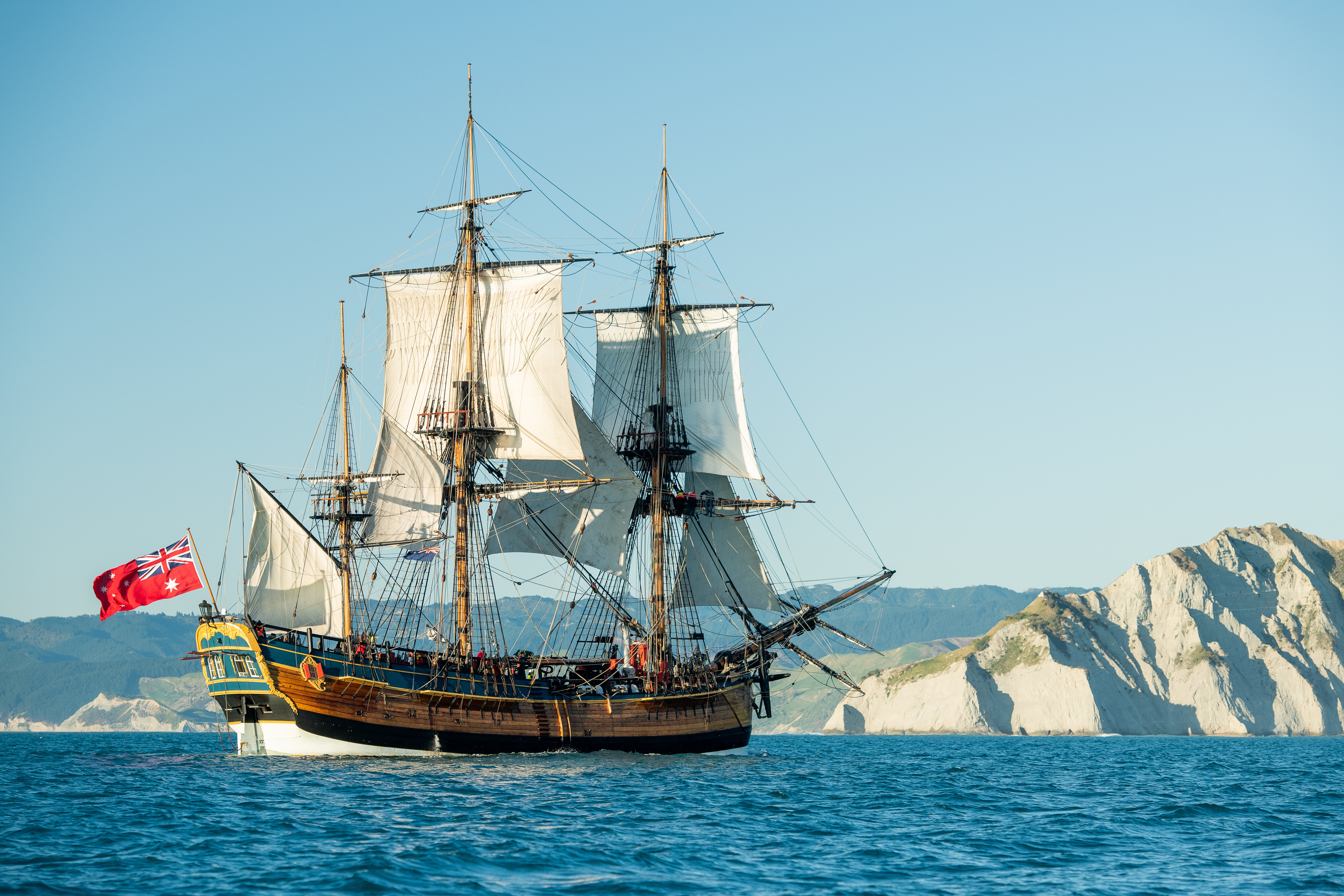HMS Endeavour: Scientific row over ‘discovery’ of Captain Cook’s ship after more than 250 years
Lead investigator says Australia ‘jumped the gun’ on confirming the identification of the vessel

Claims over the identification of the HMS Endeavour have sparked a row between experts.
Australian maritime experts’ claims of identifying the wreckage of explorer James Cook’s famous ship were “premature”, according to the lead research team involved in the search for the ship.
The Australian National Maritime Museum (ANMM), at an event in Sydney on Thursday, had claimed that a shipwreck in Newport Harbour off Rhode Island in the US was confirmed to be the same vessel that was commissioned as His Majesty’s Bark Endeavour.
“I am satisfied that this is the final resting place of one of the most important and contentious vessels in Australia’s maritime history,” Kevin Sumption, director and chief executive of the ANMM said in a statement.
“Based on archival and archaeological evidence, I’m convinced it’s the Endeavour,” Mr Sumption added.
Kathy Abbass, the lead investigator on the discovery who is from the Rhode Island Marine Archaeology Project (RIMAP), however, said Australia had “jumped the gun” in making the announcement.
Dr Abbass said the announcement by the Australian museum was also a “breach of contract” between RIMAP and ANMM for the conduct of the research and how its results were to be shared with the public.
“What we see on the shipwreck site under study is consistent with what might be expected of the Endeavour, but there has been no indisputable data found to prove the site is that iconic vessel, and there are many unanswered questions that could overturn such an identification,” she said in a statement.
Kieran Hosty, from the ANMM, told ABC News that the Australian museum was not “jumping the gun” and that it had sent a report outlining its findings 10 days ago.
Scientists have been searching for the famous vessel since 1999, investigating several 18th-century shipwrecks in a two square mile area (5 sq km), where they thought Endeavour likely sank.
Launched originally in 1764 as the Earl of Pembroke, the ship was renamed four years later as Endeavour by Britain’s Royal Navy.
The ship ventured on scientific missions in the following years, first recording the transit of Venus in Tahiti and then charting the coasts of Australia and New Zealand in 1770.
Historical records suggested the vessel was later sold to private owners and later hired by the Royal Navy to operate as troop transport.
In 1776, the vessel took soldiers to fight against American colonists who sought to break free from British control, and in 1778, it was deliberately sunk by British forces along with four other vessels Earl of Orford, Mayflower, Peggy and Yowart to create a blockade at the northern end of the Newport Harbour.
ANMM said there are several key identifiers that distinguish the newly discovered wreck from four other ships sunk in Newport in August 1778, including that it was the largest of the five scuttled vessels in that area and that the length of the surviving hull was almost exactly the same as that recorded for Endeavour.
The Australian museum said the structural details and shape of the remains “closely match” historic plans of Endeavour and that its timber samples strongly suggested it was built in Europe and not America.
“There are specific diagnostic clues such as the construction of the keel along the bottom of the wreck, the joinery used in its bow at the front and the placement of the vessel’s fore and main mast which are identical to those shown on 18th century plans of Endeavour,” it added.
“We pay tribute to the work of Dr Kathy Abbass and her team at the Rhode Island Marine Archaeology Project for their ongoing commitment to the site and its history,” Mr Sumption said.
Meanwhile, RIMAP said it would post the legitimate report on its website when the study is done, adding that its conclusions would be drawn by proper scientific process and not “Australian emotions or politics”.
Join our commenting forum
Join thought-provoking conversations, follow other Independent readers and see their replies
Comments
Bookmark popover
Removed from bookmarks